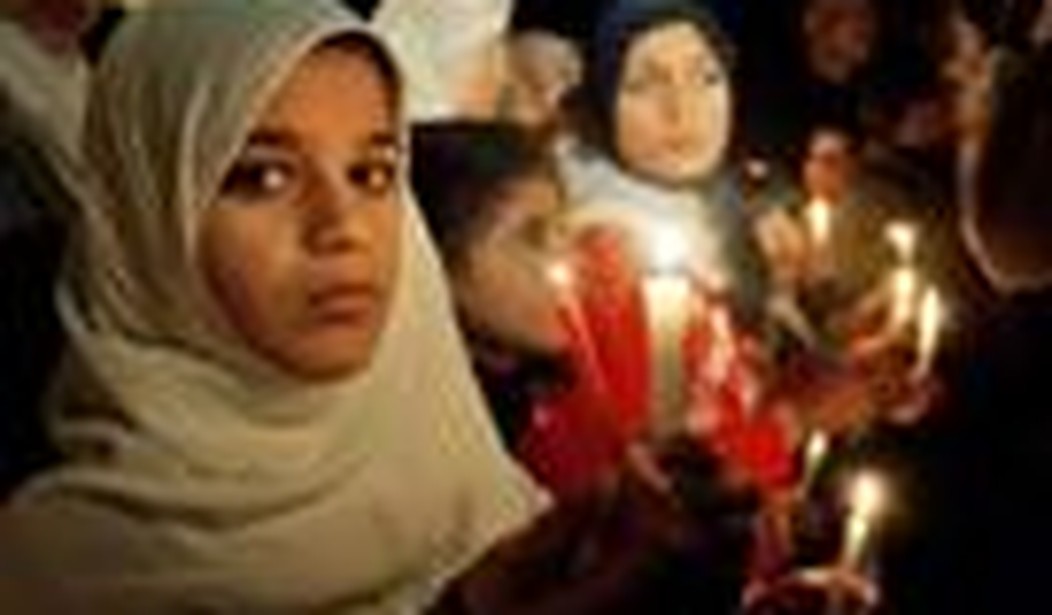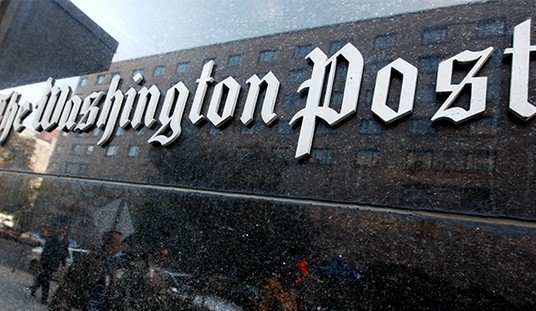The international media hasn’t been reporting it prominently, so you may or may not know that rockets have been raining down on southern Israel regularly over the past few months –as many as fifty a day. The Israeli military’s attempts to respond with pinpoint counter-strikes against Hamas buildings and rocket launching sites were largely ineffective.
Fed up with daily barrages of rocket attacks launched from Gaza and the physical and mental toll they were taking on their population, Israel began a blockade of the Gaza Strip on Thursday, January 17. They stopped the flow of commercial goods, reduced the flow of fuel, and began letting though only humanitarian aid, such as food and medicines.
By Sunday evening, Gaza City was in a complete blackout. And of course, it was Israel’s fault. Or was it?
Hamas spokesmen blamed Israel for the power shortage, claiming that they were forced to shut down power because of a fuel shortage brought about by the blockade. That same night, Al Jazeera began live broadcasts of a “spontaneous” candlelight protest in a darkened Gaza. The heart-wrenching images were broadcast throughout the Arab world and picked up by wire services and cable news outlets internationally.
It was great theater, but it was far from accurate news reporting. Gaza was not without electrical power during that time, and both the darkness and the candlelight protests were the results of a calculated ploy by Hamas.
The Gaza Strip receives 70 percent of its electricity from the Israeli Electric Company (IEC) (perhaps the only power company in the world regularly attacked by their customers.) Egyptian power companies chip in another five percent. The energy flowing into Gaza from Israel and Egypt, and making up three-quarters of Gaza’s power supply never ceased and never slowed during the “blackout.”
At that time, only power that went down was cut off when Hamas closed the single power plant that provided most of the power to Gaza City.
As the plant closed amid great ceremony by Hamas in front of eager media cameras, Aryeh Mekel, the Israeli Foreign Ministry spokesman, cried foul. “We only stopped providing fuel today, and obviously there can’t be a shortage within a few hours. They have plenty of fuel. The blackout in Gaza is simply another propaganda ploy by Hamas to pretend that they have a shortage, on the backs of their citizens.”
And yet, the near-instantaneous blackouts and candlelight protests Sunday were reported dutifully around the globe the next day. Israel’s culpability for the blackout nearly always led the story, while the fact that Israel power kept flowing was mentioned much further down in the article, if at all.
Meanwhile, the Hamas narrative and showmanship was never questioned. And it worked. By Tuesday, Israel lifted the blockade, and began shipping in over 2 million liters of fuel.
Hamas had won the media war.
It was however, a dishonest campaign.
Writing in Contentions, a blog of Commentary magazine, Noah Pollak was among the first observer to decry the duplicity involved in the Hamas media campaign, and the complicity of western news media in that effort. Pollak noted that what was occurring during the blockade was “something very typical, alas: a collaboration between journalists and Palestinians in manufacturing anti-Israel propaganda.”
He cited an article in the Jerusalem Post by Khaled Abu Toameh, in which Palestinian journalists reported that on at least two occasions, “Hamas staged scenes of darkness as part of its campaign to end the political and economic sanctions against the Gaza Strip.”
Pollak wrote:
The terrorists of Hamas may be brutal, but they understand how to wage war in the media far better than the Israelis do. They knew the fact that Israel had never cut the electricity to Gaza or even reduced it was entirely beside the point, and would probably not be investigated by reporters-and they understand that images of people sitting in darkness with their faces illuminated by candlelight are visually compelling and can do more to convince the world of Palestinian victimization than a hundred press releases could ever accomplish.
Yet the fact remains that the speciousness of this story is readily available to anyone with an Internet connection and a basic sense of skepticism and curiosity. But that hasn’t stopped the rigorously fact-checked exemplars of the MSM from repeating it.
He went on to cite examples of this lack of skepticism throughout the most respected organs of the U.S. press, from editorials in the New York Times, the Washington Post, and Time Magazine.
One of the most blatantly – and clumsily – orchestrated Hamas photo opportunities involved photographers from Reuters.
Roger L. Simon and Michael Weiss of Pajamas Media picked up upon the Time Magazine example cited by Pollak as a particularly vile example of media complicity, noting that in one photograph run by Time Magazine of Hamas officials meeting by candlelight, daylight could be seen streaming in through the curtains. Palestinian journalists later confirmed that the meeting had occurred in daylight.
The photograph was staged. The media was complicit. Pollak seemed hardly surprised, as he made clear speaking to Pajamas Media from Jerusalem:
The “pulse” here in Israel for these kinds of things is generally one of indifference. I haven’t seen it talked about all that much; the basic understanding here — I can’t really say that it’s wrong — is that large segments of the international press more or less has it in for this country, and will gladly publish whatever makes Israel look bad, irrespective of its fairness or accuracy.
Writing in the Jerusalem Post, Amir Mizroch criticized Israel’s media response to Hamas’ domination of the “blackout: narrative, including the choreographed candlelight ceremonies, noting the failure of the Israeli government to put forth a unified communications strategy to deal with the propaganda efforts of Hamas. Mizroch noted that while the Israeli government is competent at set-piece public relations, they often founder when confronted with rapidly changing events on the ground. When contacted by Pajamas Media for comment, Mizroch said:
I understand why decision makers don’t always want to have PR people in the room with them when setting policy – there are many justifiable reasons for this. But I think communications is one of many tools for war and diplomacy, and the sooner our leaders start using that tool effectively the better.
If past behavior is any guide, Hamas rockets will doubtless continue to fall on southern Israel, and a complicit media will once again cast them as the victims when Israel is forced to respond. A call for comment placed for Pajamas Media to the IDF spokesperson’s office Saturday afternoon has not been returned, which, in light of Mizroch’s critique, was sadly expected.
Bob Owens blogs at Confederate Yankee.









Join the conversation as a VIP Member